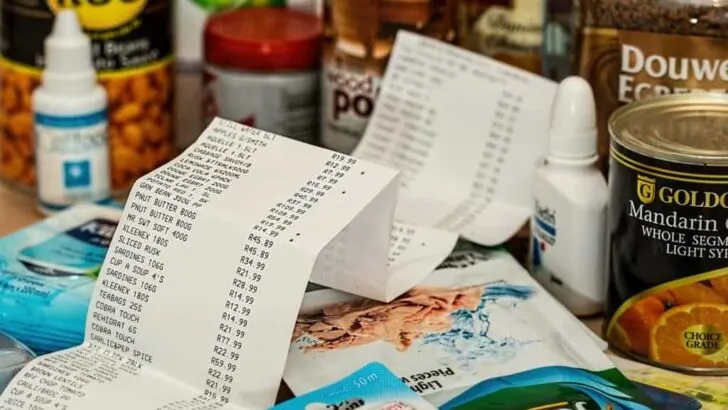It should be easy to know how to read expiration dates, but it’s really not. That’s because some products use “sell by,” “display until,” “best before,” and “use by” dates. Each one means something a little different, so it’s hard to know how those dates actually affect the food you’re buying.
Unfortunately, many people waste perfectly viable food because they are worried about the dates. It is estimated that an American family of four wastes 950 pounds of food per year on average. That’s an estimated $1,800 per year on food that they don’t even eat!
Many surplus and salvage grocery stores sell items that are close to or past their designated dates. These items are often available at a steep discount and are perfectly safe to eat!
Obviously, many people have questions about how to read expiration dates. We’re here to help!
Here’s how to read expiration dates.
Of course, before you can interpret the date, you need to know what kind of date it is. Is it actually an expiration date? Or is it a best buy or use by date?
“Sell by” dates are used for stock control.
“Sell by,” and the corresponding UK label “display until,” are just suggestions for the store. They tell the store when to rotate the product out of the store.
According to the National Resource Defense Council, vendors should make sell by dates invisible to the consumer because they are only relevant to retailers. These dates create confusion and waste because they are misunderstood by consumers.
The USDA states that a “sell by” date is not a safety date.
“Best before” dates are for quality.
“Best before” and “best if used by” dates are an indicator of quality and freshness. After this date, food quality may decline. It might not taste as good, but it will still be edible and safe to eat.
The USDA states that the “best by” date is not a purchase or safety date.
The “use by” date is the most difficult.
The “use by” date is the most complicated. Usually, the use by date is simply a quality indicator like the “best before” date. Some foods, like cheese and bread, can be safely consumed after the “use by” date as long as it looks and smells safe.
In some cases, a use by date should be taken seriously. This is true for very-perishable items like eggs, meat or poultry.
According to the USDA, the “use by” date is “not a safety date except for when used on infant formula.”
A “freeze by” date is also a suggestion.
A freeze by date is designed to help the consumer preserve freshness. It does not mean that the product will expire at that time. The USDA clearly states that it is not a purchase or safety date.
Here area few things you need to know about expiration dates.
Even with that in mind, learning how to read expiration dates is not as straightforward as it should be. We’ve uncovered some interesting details about expiration dates.
There is no federal regulation of expiration dates.
According to the United States Department of Agriculture, “except for infant formula, dates are NOT an indicator of the product’s safety and are not required by Federal law.”
Forbes Magazine reported that the majority of states require date labels on at least one type of food product and around half forbid retailers from selling states past their date. However, there is no federal regulation regarding these dates.
That means the dates are entirely left up to the vendors.
Should you even read expiration dates?
Companies create these dates in one of four ways:
The first and easiest is the taste test. Panelists will sample an item on various dates until someone says that it doesn’t taste good any more.
The second method uses published literature to determine the estimated shelf-life of the product.
The third method uses lab tests to determine how long the food will remain at its best quality.
Smaller food companies that can’t afford these methods may just take a wild guess based on their competitors dates.
Is there a better way to tell if food is still good?
Knowing how to tell when food has spoiled is even more important than learning how to read expiration dates. You can conduct your own tests to determine whether or not the food is still safe to eat.
The USDA advises, “If the date passes during home storage, a product should still be safe and wholesome if handled properly until the time spoilage is evident. Spoiled foods will develop an off odor, flavor or texture due to naturally occurring spoilage bacteria. If a food has developed such spoilage characteristics, it should not be eaten.”
You can also check the USDA’s FoodKeeper App to see how long food items should last.
Look for signs of spoilage.
There are many indicators that a food has passed its safe date. This could include discoloration. For example, a whitish fluid in an open package of hot dogs is a clear indicator that it should not be eaten.
However, many food molds are not dangerous. In fact, you can just cut mold off of cheese and use the non-moldy parts.
Smell it.
If the food smells differently, it may be unsafe. This is especially true for ground meats and pasteurized milk.
Don’t store leftovers for more than 4 days.
Leftovers should generally not be stored for more than four days at 40 degrees Fahrenheit.


ALTON NICHOLAS
Thursday 15th of December 2022
the label dont tell you when the product was harvested or canned/package this information would be more valuable than best dates, experations or used dates.